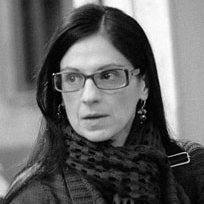People and the City: Real Estate-Scape as a Sustainable Citizenship Project
A special issue of Sustainability (ISSN 2071-1050).
Deadline for manuscript submissions: closed (26 March 2023) | Viewed by 2915
Special Issue Editors
Interests: project and planning valuation; cultural heritage valuation; urban equalization; environmental assessment; damage appraisal; real estate analysis and appraisal
Special Issues, Collections and Topics in MDPI journals
Interests: environmental economics; real estate economics; urban economics; urban and land management; urban and land sustainability; cultural resources valuation; multiple criteria decision analysis (MCDA); datamining; GIS
Special Issues, Collections and Topics in MDPI journals
Special Issue Information
Dear Colleagues,
The previous SI, entitled "Real Estate Landscape: Accounting, Appraisal and Assessment" was an opportunity to broaden knowledge and consolidate awareness of the relationship between the multiple concrete urban values and their abstract monetary measures, with specific reference to the to the real estate capital asset value.
The contributors proposed critical reflections and solicitations that highlighted the (often asymmetrical) relationship between the forms of real estate capital and the social and environmental characteristics of the physical and relational city space.
The extensive analysis of the literature, and the applications proposed in the previous SI laid the foundations for characterising now the "real estate-scape" as the ethical and aesthetic dimension of the "human city" that is the aggregation of people and hopes (resources and opportunity) as condition for the rebirth of a common vision.
The market has traditionally been seen as the place for the meeting of supply and demand, in the proper sense, and of people with different instances and values, in the broader sense. More generally, it is the space of social communication by means of the language of money.
Language allows speakers to select, identify, and exchange concrete concepts for abstract words, thus giving shape to linguistic communities. Likewise, money allows social communities to select, identify, and exchange economic goods: through the recursive exchange of real estate capital assets, the monetary language gives economic identity and space-time continuity to the settled communities.
The asymmetries of communication, due to the multiple ambiguities of language, have made it necessary the formalization of the grammars as well as the right to education. Similarly, sharing the language, its rules, and the opportunities associated with its correct use has been considered both as an individual resource and as a public necessity.
Furthermore, the affirmation and refinement of rhetoric, the strengthening of the mass media, and the need to create consensus have generated mismatches of knowledge and awareness that have made it necessary to create educational and cultural institutions aimed at sharing correct information.
The evolution of the settled communities has been affected by the structural scarcity of valuable soils compared to the growing demand for them. Such phenomena over time consolidated the prevalence of the reasons for urban income over the fairness instances of the communities themselves, triggering processes of self-valorisation of real estate capital assets in the face of monetary inflation. The consequent negative social effects have been faced by creating public institutions and setting up fiscal equity measures aimed at reducing social polarisation drifts.
Based on these premises, this Special Issue aims to stimulate further reflection on the "real estate-scape" in the climate of the current "age of changes" concerning new and different relationships between state and market, accumulated and redistributed wealth, public and private sphere.
This prospect involves the constructive role of the value judgment in the reform of the home-city-landscape system in view of the civil and moral progress of the urban communities coping with environmental threats that are increasingly less predictable as well as more and more insidious.
Prof. Dr. Salvatore Giuffrida
Prof. Dr. Maria Rosa Trovato
Guest Editors
Manuscript Submission Information
Manuscripts should be submitted online at www.mdpi.com by registering and logging in to this website. Once you are registered, click here to go to the submission form. Manuscripts can be submitted until the deadline. All submissions that pass pre-check are peer-reviewed. Accepted papers will be published continuously in the journal (as soon as accepted) and will be listed together on the special issue website. Research articles, review articles as well as short communications are invited. For planned papers, a title and short abstract (about 100 words) can be sent to the Editorial Office for announcement on this website.
Submitted manuscripts should not have been published previously, nor be under consideration for publication elsewhere (except conference proceedings papers). All manuscripts are thoroughly refereed through a single-blind peer-review process. A guide for authors and other relevant information for submission of manuscripts is available on the Instructions for Authors page. Sustainability is an international peer-reviewed open access semimonthly journal published by MDPI.
Please visit the Instructions for Authors page before submitting a manuscript. The Article Processing Charge (APC) for publication in this open access journal is 2400 CHF (Swiss Francs). Submitted papers should be well formatted and use good English. Authors may use MDPI's English editing service prior to publication or during author revisions.
Keywords
- real estate capital asset
- urban/human landscape
- housing market
- money language
- economic communication
- urban/environmental policies






